Road signs in Germany

Road signs in Germany follow the design of that set out in the Vienna Convention on Road Signs and Signals.
Traffic signs, road markings, installations, and symbols used in Germany are prescribed by the Road Traffic Regulation (StVO, German: Straßenverkehrs-Ordnung) and the Traffic Signs Catalog (VzKat, German: Verkehrszeichenkatalog).[1][2][3]
Regulation
[edit]§§ 39 to 43 of the StVO regulate the effect of traffic signs and installations. Annexes 1 to 3 illustrate most warning, regulatory, and directional signs and annex 4 illustrates the traffic installations. Other traffic signs and installations not specified in the StVO, primarily specific supplementary signs, are published in the VzKat.[1]
The latest version of the VzKat was issued in May 2017 as the annex to the General Administrative Rules for the Road Traffic Regulation (VwV-StVO, German: Allgemeine Verwaltungsvorschrift zur Straßenverkehrs-Ordnung).[4]
The StVO, the VwV-StVO and the VzKat are supported by technical rules, mostly published by the Road and Transportation Research Association (FGSV), especially:
- The Guidelines for Directional Signage outside of Motorways (RWB, German: Richtlinien für die wegweisende Beschilderung außerhalb von Autobahnen)[5][6]
- The Guidelines for Directional Signage on Motorways (RWBA, German: Richtlinien für die wegweisende Beschilderung auf Autobahnen)[7][8]
- The Guidelines for Touristic Signage (RtB, German: Richtlinien für die touristische Beschilderung)[9]
- The Guidelines for Signage for Detours (RUB, German: Richtlinien für Umleitungsbeschilderungen)[10][11]
- The Guidelines for the Marking of Roads (RMS, German: Richtlinien für die Markierung von Straßen)[12]
- The Guidelines for Traffic Signals (RiLSA, German: Richtlinien für Lichtsignalanlagen)[13][14]
- The Guidelines for the Safety of Road Construction Sites (RSA, German: Richtlinien für die verkehrsrechtliche Sicherung von Arbeitsstellen an Straßen)[15]
Each sign has an assigned number. The suffix number after the hyphen refers to the variation of the sign; the suffix on signs with variable numbers is the number depicted on the sign (for speed limits, maximum heights, etc.).[2]
The used typeface is the DIN 1451 font.
History
[edit]
The first set of unified road signs in Germany was introduced in 1927 in the Weimar Republic with the Verordnung über Warnungstafeln für den Kraftfahrzeugverkehr. It consisted of only 6 warning signs.
In 1934, this regulation was replaced with the Imperial Road Traffic Regulation (German: Reichs-Straßenverkehrs-Ordnung), which was acccompanied by an administrative ordinance (German: Ausführungsanweisung zur Reichs-Straßenverkehrs-Ordnung) with a set of 37 road signs.

The Imperial Road Traffic Regulation was replaced in 1938 with an regulation called "Regulation about the behavior in Road Traffic" (German: Verordnung über das Verhalten im Straßenverkehr), abbreviated "Road Traffic Regulation" (German: Straßenverkehrs-Ordnung). This regulation was amended a few times until the occupation of Germany in 1945.
The StVO of 1938 remained in force until 1971 in West Germany (with major amendmendts in 1953[16] and 1956[17]) and until 1956 in East Germany.
Germany signed the Vienna Convention on Road Signs and Signal in 1968,[18] together with the Vienna Convention on Road Traffic. The adoption of the provisions of both conventions led to the development of a new StVO which entered into force in 1971 in West Germany.[19]
The first sign with symbols of the current design is Sign 325 (residential street), which has been introduced in 1980.[20] In 1992 this design has been applied to all road signs of the StVO.[21]
General symbols
[edit]- Motor vehicles (excluding motorcycles)[note 1]
- Passenger vehicle with a trailer
- Truck with a trailer
- Motor vehicles and vehicle combinations which cannot or may not drive faster than 25 km/h
Danger signs
[edit]- Sign 101
Danger. A supplementary sign can specify the danger. - Sign 101-11
Pedestrian crossing - Sign 101-21
Pedestrian crossing - Sign 101-12 / 101-22
Cattle - Sign 101-13 / 101-23
Equestrians - Sign 101-14 / 101-24
Amphibians - Sign 101-15
Rockfall - Sign 101-25
Rockfall - Sign 101-51
Slipperiness due to snow or ice - Sign 101-52
Grit/gravel at the edge of the road - Sign 101-53
Shore or riverbank - Sign 101-54
Insufficient clearance - Sign 101-55
Movable bridge - Sign 103-10
Curve (left) - Sign 103-20
Curve (right) - Sign 105-10
Double curve (first left) - Sign 105-20
Double curve (first right) - Sign 108-10
Descent - Sign 110-12
Ascent - Sign 112
Uneven road - Sign 114
Slipperiness when road is wet or dirty - Sign 117-10
Crosswind - Sign 117-20
Crosswind - Sign 120
Road narrowing - Sign 121-10
One-sided road narrowing (right) - Sign 121-20
One-sided road narrowing (left) - Sign 123
Roadworks - Sign 124
Traffic jams - Sign 125
Oncoming traffic - Sign 131
Traffic signals - Sign 133-10 / 133-20
Pedestrians - Sign 136-10 / 136-20
Children - Sign 138-10 / 138-20
Cycles - Sign 142-10
Wild animals - Sign 142-20
Wild animals - Sign 151
Railroad crossing - Sign 156-10 / 156-20
Railroad crossing with three-striped warning – 240 m distance - Sign 156-11 / 156-21
Railroad crossing with three-striped warning – custom distance - Sign 157-10 / 157-20
Three-striped warning for railroad crossing – 240 m distance - Sign 157-11 / 157-21
Three-striped warning for railroad crossing – custom distance - Sign 159-10 / 159-20
Two-striped warning for railroad crossing – 160 m distance - Sign 159-11 / 159-21
Two-striped warning for railroad crossing – custom distance - Sign 162-10 / 162-20
One-striped warning for railroad crossing – 80 m distance - Sign 162-11 / 162-21
One-striped warning for railroad crossing – custom distance
Regulatory signs
[edit]- Sign 201-50 / 201-52
Crossbuck - Sign 201-51 / 201-53
Crossbuck indicating tracks possess overhead electrical wires - Sign 205
Yield - Sign 206
Stop - Sign 208
Oncoming traffic has the right-of-way - Sign 209
Turn right ahead - Sign 209-10
Turn left ahead - Sign 209-30
Go straight ahead - Sign 211
Turn right - Sign 211-10
Turn left - Sign 214
Go straight or turn right ahead - Sign 214-10
Go straight or turn left ahead - Sign 214-30
Turn left or right ahead - Sign 215
Roundabout - Sign 220-10
One-way street - Sign 220-20
One-way street - Sign 222
Pass on the right - Sign 222-10
Pass on the left - Sign 223.2-50 – 223.2-52
Rush-hour lane closed - Sign 223.3-50 – 223.3-52
Vacate rush-hour lane - Sign 229 – 229-31
Taxi stand - Sign 237
Bicycle path - Sign 238
Equestrian path - Sign 239
Sidewalk - Sign 241-30
Separated pedestrian and bicycle path - Sign 241-31
Separated pedestrian and bicycle path - Sign 242.1
Start of pedestrian zone - Sign 242.2
End of pedestrian zone - Sign 244.1
Start of bicycle street - Sign 244.2
End of bicycle street - Sign 244.3
Start of bicycle zone - Sign 244.4
End of a bicycle zone - Sign 245
Bus lane - Sign 250
No vehicles of any kind permitted - Sign 251
No 2-tracked motor vehicles permitted - Sign 253
No vehicles over 3.5 t permitted - Sign 254
Cycles prohibited - Sign 255
Motorcycles, including those with sidecars, and mopeds forbidden - Sign 257-50
Mopeds prohibited - Sign 257-51
Horse-riders prohibited - Sign 257-52
Horse-drawn vehicles prohibited - Sign 257-53
Cattle traffic prohibited - Sign 257-54
Buses prohibited - Sign 257-55
Powered passenger cars prohibited - Sign 257-56
Powered passenger cars with trailers prohibited - Sign 257-57
Trucks with trailer(s) prohibited - Sign 257-58
Farm vehicles (25 km/h or slower) prohibited - Sign 259
Pedestrians prohibited - Sign 260
Motor vehicles prohibited - Sign 261
Trucks carrying hazardous materials prohibited - Sign 263–5,5
Total vehicle weight limit (5.5 tonnes) - Sign 263-8
Load limit per axle (8 tonnes) - Sign 264-2
Width limit (including wing mirrors) - Sign 265–3,8
Height limit (3.8 meters) - Sign 266-10
Length limit (10 meters) - Sign 267
No entry - Sign 268
Snow chains required - Sign 269
Trucks carrying water-polluting substances prohibited - Sign 270.1
Low-emission zone - Sign 270.2
End of low-emission zone - Sign 272
No U-turn - Sign 273
Minimum distance between vehicles over 3.5 t - Sign 274-60
Speed limit - Sign 274.1
Speed limit zone - Sign 274.2
End of speed limit zone - Sign 275-30
Minimum speed - Sign 276
No overtaking - Sign 277
No overtaking by vehicles over 3.5 t - Sign 277.1
No overtaking of cycles and mopeds - Sign 278-60
End of speed limit - Sign 279-30
End of minimum speed - Sign 280
End of no overtaking - Sign 281
End of no overtaking by vehicles over 3.5 t - Sign 281.1
End of no overtaking of cycles and mopeds - Sign 282
End of all restrictions - Sign 283
No stopping - Sign 283-10
- Sign 283-11
- Sign 283-20
- Sign 283-21
- Sign 283-30
Top arrow only (start of zone), bottom arrow only (end of zone) - Sign 283-31
- Sign 286
No parking - Sign 286-10
Start of no parking zone (left side) - Sign 286-11
- Sign 286-20
End of no parking zone (right side) - Sign 286-21
Start of no parking zone (right side) - Sign 286-30
- Sign 286-31
- Sign 290.1
No parking zone - Sign 290.2
End of no parking zone - Sign 293
Pedestrian crossing - Sign 294
Stop line - Sign 295
Solid line and edge line markings - Sign 296
Solid and broken line markings - Sign 297
Direction arrows - Sign 297.1
Advance notice arrow - Sign 297.1-21
Advance notice arrow to indicate a lane end - Sign 298
Hatched markings – occupying this area not permitted - Sign 299
No parking or waiting area
Directional signs
[edit]- Sign 301
Intersection ahead – right-of-way only for this intersection - Sign 306
Priority road – right-of-way on all following intersections - Sign 307
End of priority road - Sign 308
Priority over oncoming traffic - Sign 310
Start of urban area (implied 50 km/h speed limit) - Sign 311
End of urban area (with distance to next town) - Sign 314
Parking place - Sign 314-10
Parking place (start) - Sign 314-20
Parking place (end) - Sign 314-30
- Sign 314-50
Parking garage - Sign 314.1
Start of parking management area[note 9] - Sign 314.2
End of parking management area - Sign 315-55
- Sign 315-60
- Sign 315-65
- Sign 315-70
- Sign 315-75
- Sign 315-80
- Sign 315-85
- Sign 316
Park and ride - Sign 316-50
Park and carpool - Sign 317
Parking for hikers - Sign 318
Parking disc - Sign 325.1
Traffic calming zone - Sign 325.2
End of traffic calming zone - Sign 327
Tunnel - Sign 327-50
Length of tunnel - Sign 330.1
Start of Autobahn - Sign 330.2
End of Autobahn - Sign 331.1
Start of expressway - Sign 331.2
End of expressway - Sign 332
Exit direction sign (Autobahn) - Sign 332.1
Exit direction sign (Bundesstraße) - Sign 332.1-20
Exit direction sign (other roads) - Sign 333
Autobahn exit - Sign 333.1
Bundesstraße exit - Sign 333.1-20
Exit (other roads) - Sign 340
Guide (broken) line marking - Sign 341
Yield line markings - Sign 342
"Shark teeth" markings - Sign 350-10
Pedestrian crossing - Sign 350-20
Pedestrian crossing - Sign 350.1
Bicycle highway - Sign 350.2
End of bicycle highway - Sign 354
Water protection area - Sign 356
Pedestrian crossing patrol - Sign 357
Dead end - Sign 357-50
Dead end (except for pedestrians and cycles) - Sign 357-51
Dead end (except for pedestrians) - Sign 357-52
Dead end (except for cyclists) - Sign 363
Police station - Sign 365-50
Telephone - Sign 365-51
Emergency telephone - Sign 365-52
Petrol station - Sign 365-53
Petrol station with LPG - Sign 365-54
Petrol station with CNG - Sign 365-55
Motorway hotel - Sign 376
Motorway restaurant - Sign 377
Motorway refreshments - Sign 378
Public toilet - Sign 365-59
Road church - Sign 365-60
Camping and caravan site - Sign 365-61
Information - Sign 365-62
Repairs - Sign 365-63
Pedestrian underpass - Sign 365-64
Pedestrian overpass - Sign 365-65
Charging station for electric vehicles - Sign 365-66
Hydrogen Station - Sign 365-67
Motor caravan campsite - Sign 365-68
Campersite - Sign 386.1
Tourist attraction - Sign 386.1-10
- Sign 386.1-11
new design 2017 - Sign 386.1-12
- Sign 386.1-20
new sign 2017 - Sign 386.1-21
new design 2017 - Sign 386.1-22
- Sign 386.1-30
- Sign 386.1-50
old number since 2017: 386.1-32 - Sign 386.1-51
old number since 2017: 386.1-33 - Sign 386.1-52
old number since 2017: 386.1-34 - Sign 386.1-53
old number since 2017: 386.1-50 - Sign 386.2
Tourist route - Sign 386.2-10
new design 2017 - Sign 386.2-11
new sign 2017 - Sign 386.2-12
new sign 2017 - Sign 386.2-22
new sign 2017 - Sign 386.2-20
new design 2017 - Sign 386.2-21
new sign 2017 - Sign 386.2-30
new sign 2017 - Sign 386.2-51
new sign 2017 - Sign 386.2-52
old number since 2017: 386.2-30 - Sign 386.2-53
new sign 2017 - Sign 386.3
- Sign 386.3-50
- Sign 390.2
End of toll road for heavy lorries - Sign 391
Toll road - Sign 392
Stop – customs - Sign 393
Speed limits in Germany - Sign 394-50
Street light warning marker (lamp will not remain lit all night) - Sign 401
Bundesstraße route number - Sign 405
Autobahn route number - Sign 406-50
Exit number - Sign 406-51
- Sign 410
European route number - Sign 415-20
- Sign 415-10
- Sign 415-20
- Sign 418-10
- Sign 418-20
- Sign 419-20
- Sign 421-20
Route for vehicles over 3.5 t - Sign 422-10
- Sign 422-11
- Sign 422-20
- Sign 422-21
- Sign 422-30
- Sign 422-32
- Sign 422-34
- Sign 422-36
- Sign 430-10
Direction towards Autobahn entrance - Sign 430-20
- Sign 432-10
Direction to train station - Sign 432-20
- Sign 434
Sign on approaches to junctions - Sign 434-52
- Sign 434-53
- Sign 437
Street name sign - Sign 438
Sign on approaches to junctions - Sign 439
Sign on approaches to junctions (lanes) - Sign 440
Autobahn junction entrance sign - Sign 441
Autobahn junction entrance sign - Sign 442-10
old number since 2017: 442-11 - Sign 442-12
old number since 2017: 442-13 - Sign 442-13
old number since 2017: 442-10 - Sign 442-20
old number since 2017: 442-21 - Sign 442-22
old number since 2017: 442-23 - Sign 442-23
old number since 2017: 442-20 - Sign 442-50
new sign 2017 - Sign 442-51
new sign 2017 - Sign 442-52
new sign 2017 - Sign 442-53
new sign 2017 - Sign 448-50
Next exit sign (other roads) - Sign 450-50
Exit countdown marker (Autobahn, 100m before exit) - Sign 450-51
Exit countdown marker (Autobahn, 200m before exit) - Sign 450-52
Exit countdown marker (Autobahn, 300m before exit) - Sign 450-53
Exit countdown marker (other roads, 100m before exit) - Sign 450-54
Exit countdown marker (other roads, 200m before exit) - Sign 450-55
Exit countdown marker (other roads, 300m before exit) - Sign 453-50
Route confirmation sign (other roads) - Sign 454-20
- Sign 455.1-10
- Sign 455.1-11
- Sign 455.1-12
- Sign 455.1-20
- Sign 455.1-21
- Sign 455.1-22
- Sign 455.1-30
Detour or bypass - Sign 455.1-50
- Sign 455.2
- Sign 457.1
Detour or bypass sign - Sign 457.2
End of detour or bypass - Sign 458
Detour or bypass route layout - Sign 460-10
- Sign 460-11
- Sign 460-12
- Sign 460-20
- Sign 460-21
- Sign 460-22
- Sign 460-30
Detour (Autobahn) - Sign 460-50
new sign 2017 - Sign 466
Autobahn detour ahead - Sign 467.1-10
Existing alternate route or bypass (Autobahn) - Sign 467.1-20
- Sign 467.1-30
- Sign 467.2
End of detour or bypass (symbol) - Sign 500
Detouring onto opposite lane (in 200 m) - Sign 501-10
- Sign 501-11
- Sign 501-12
- Sign 501-15
new sign 2017 - Sign 501-16
old number since 2017: 501-15 - Sign 501-17
old number since 2017: 501-16 - Sign 501-18
old number since 2017: 501-17 - Sign 501-20
- Sign 501-21
- Sign 501-22
- Sign 505-11
old number since 2017: 505-12 - Sign 505-12
new sign 2017 - Sign 505-21
old number since 2017: 505-22 - Sign 505-22
new sign 2017 - Sign 511-11
- Sign 511-12
- Sign 511-20
- Sign 511-21
- Sign 511-22
- Sign 513-10
- Sign 513-11
- Sign 513-20
- Sign 513-21
- Sign 514-10
- Sign 514-20
- Sign 515-11
old number since 2017: 515-12 - Sign 515-12
old number since 2017: 515-13 - Sign 515-21
old number since 2017: 515-22 - Sign 515-22
old number since 2017: 515-23 - Sign 521-30
- Sign 521-31
- Sign 521-32
- Sign 521-33
- Sign 522-30
- Sign 522-31
- Sign 522-32
- Sign 522-33
- Sign 522-34
- Sign 522-35
- Sign 522-36
- Sign 522-37
new sign 2017 - Sign 522-38
new sign 2017 - Sign 531-10
End of lane - Sign 532-10
- Sign 535-11
- Sign 536-20
- Sign 541-10
- Sign 542-10
- Sign 545-11
- Sign 546-10
- Sign 551-20
- Sign 551-21
- Sign 551-22
- Sign 590-10
Complicated traffic touring (if turning left is forbidden) - Sign 590-11
Road equipment
[edit]- Sign 600-30
Barrier board - Sign 605-10
Guiding beacon - Sign 605-11
- Sign 605-13
- Sign 605-14
- Sign 605-23
- Sign 605-24
- Sign 610-40
Guide cone - Sign 615
Moveable road barrier - Sign 616-30
Moveable road barrier with flashing arrow - Sign 616-31
- Sign 620-40
Reflexion post (right-hand side) - Sign 620-41
Reflexion post (left-hand side) - Sign 625-10
- Sign 626-10
- Sign 626-20
- Sign 626-30
- Sign 626-31
- Sign 627-50
- Sign 628-10
- Sign 629-10
- Sign 630-10
Additional signs
[edit]- To the left
- To the right
- After the left turn, a hazard exists (another sign defining the hazard would be above)
- After the right turn, a hazard exists (another sign defining the hazard would be above)
- Fußgänger Gehweg gegenüber benutzen
Use Sidewalk on left side of roadway - Fußgänger Gehweg gegenüber benutzen
Use Sidewalk on right side of roadway - Directional indications by arrows, detour signs, three-quarter circle[22]
- Both directions, two opposing horizontal arrows
- Both directions, two opposite vertical arrows
- Two-way cycle route crossing road
- Cycling in the opposite direction
- Directional indications by arrows, detour signs, semicircle[22]
- For 800 m
- For 3 km
- Continues for ... m
- Continues for ... km
- Course of this priority road turns left
- Road from left and ahead has priority
- 100 m ahead
- 200 m ahead
- 400 m ahead
- 600 m ahead
- 2 km ahead[23]
- Stop 100 m ahead
- Zipper method in ... m
- Late merge in 200m
- Ends in ...m
- Risk of accident
- Migratory toad crossing
- Construction site exit
- Damaged roadway
- Spillage on road
- Exit
- Accident
- Knoll
- Police check
- Fog
- Driveway
- Right of way changed
- Traffic routing changed
- Industrial area (trains have priority)
- Port area (rail traffic has priority)
- Children allowed to play in road
- Skiers allowed to cross road
- Large wagons can park here without the usual two week temporal parking restriction
- Caravans can park here without the usual two week temporal parking restriction
- End of restriction
- Cyclists dismount
- Green wave at ...km/h
- Stop here on red
- Pass over verges/shoulder
- End of passing over verges/shoulder
- Tunnel category B
- Tunnel category C
- Tunnel category D
- Tunnel category E
- Disabled with permit No. ... allowed
- Bicycle and residents allowed
- Residents only
-


 French
French Deutsch
Deutsch![Motor vehicles (excluding motorcycles)[note 1]](http://upload.wikimedia.org/wikipedia/commons/thumb/b/b4/Sinnbild_Kfz.svg/120px-Sinnbild_Kfz.svg.png)
![Trucks[note 2]](http://upload.wikimedia.org/wikipedia/commons/thumb/8/84/Sinnbild_LKW.svg/120px-Sinnbild_LKW.svg.png)






![High-occupancy vehicle[note 3]](http://upload.wikimedia.org/wikipedia/commons/thumb/d/de/Personenkraftwagen_oder_Kraftr%C3%A4der_mit_Beiwagen%2C_die_mit_mindestens_drei_Personen_besetzt_sind_-_Mehrfachbesetzte_Personenkraftwagen%2C_Sinnbild_nach_%C2%A7_39_StVO%2C_StVO_2020.svg/120px-thumbnail.svg.png)




![Electric bicycle[note 4]](http://upload.wikimedia.org/wikipedia/commons/thumb/8/84/Sinnbild_E-Bikes.svg/120px-Sinnbild_E-Bikes.svg.png)
![Small electric vehicles[note 5]](http://upload.wikimedia.org/wikipedia/commons/thumb/c/cb/Elektrokleinstfahrzeuge_im_Sinne_der_Elektrokleinstfahrzeuge-Verordnung_%28eKFV%29%2C_Sinnbild_nach_%C2%A7_39_StVO%2C_StVO_2020.svg/120px-Elektrokleinstfahrzeuge_im_Sinne_der_Elektrokleinstfahrzeuge-Verordnung_%28eKFV%29%2C_Sinnbild_nach_%C2%A7_39_StVO%2C_StVO_2020.svg.png)

![Electrically powered vehicle[note 6]](http://upload.wikimedia.org/wikipedia/commons/thumb/a/a6/Sinnbild_elektrisch_betriebenes_Fahrzeug%2C_StVO_2015.svg/120px-Sinnbild_elektrisch_betriebenes_Fahrzeug%2C_StVO_2015.svg.png)

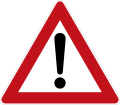





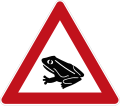
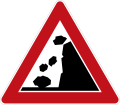


























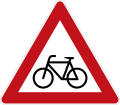

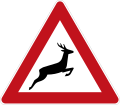








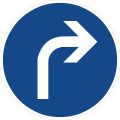


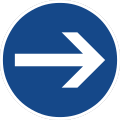
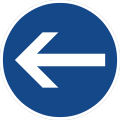






![Sign 223.1-50 – 223.1-52 Rush-hour lane open[note 7]](http://upload.wikimedia.org/wikipedia/commons/thumb/5/51/Zeichen_223.1-50_-_Seitenstreifen_befahren%2C_2_Fahrstreifen_u._Seitenstreifen%2C_StVO_2017.svg/120px-Zeichen_223.1-50_-_Seitenstreifen_befahren%2C_2_Fahrstreifen_u._Seitenstreifen%2C_StVO_2017.svg.png)


![Sign 224 Bus stop or tram stop[note 8]](http://upload.wikimedia.org/wikipedia/commons/thumb/a/a6/Zeichen_224_-_Haltestelle%2C_StVO_2017.svg/120px-Zeichen_224_-_Haltestelle%2C_StVO_2017.svg.png)
![Sign 224-51 Bus stop for school buses during designated times[note 8]](http://upload.wikimedia.org/wikipedia/commons/thumb/f/f9/Zeichen_224-51_-_Schulbushaltestelle_%28mit_Zusatzzeichen_1042-36%29%2C_StVO_2017.svg/120px-Zeichen_224-51_-_Schulbushaltestelle_%28mit_Zusatzzeichen_1042-36%29%2C_StVO_2017.svg.png)


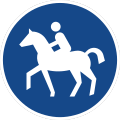

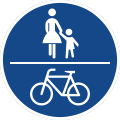





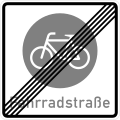







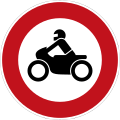

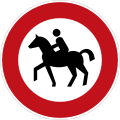



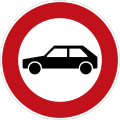



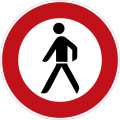

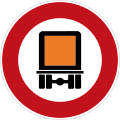







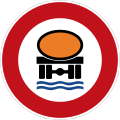


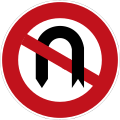

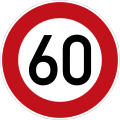

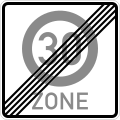
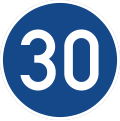
































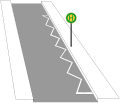



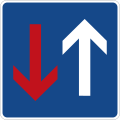


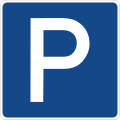

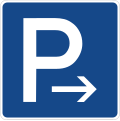


![Sign 314.1 Start of parking management area[note 9]](http://upload.wikimedia.org/wikipedia/commons/thumb/5/56/Zeichen_314.1_-_Beginn_einer_Parkraumbewirtschaftungszone%2C_StVO_2009.svg/120px-Zeichen_314.1_-_Beginn_einer_Parkraumbewirtschaftungszone%2C_StVO_2009.svg.png)

![Sign 315-50 Sidewalk parking[note 10]](http://upload.wikimedia.org/wikipedia/commons/thumb/5/51/Zeichen_315-50_-_Parken_halb_auf_Gehwegen_in_Fahrtrichtung_links%2C_StVO_1992.svg/120px-Zeichen_315-50_-_Parken_halb_auf_Gehwegen_in_Fahrtrichtung_links%2C_StVO_1992.svg.png)















![Sign 328 Breakdown bay[note 11]](http://upload.wikimedia.org/wikipedia/commons/thumb/6/63/Zeichen_328_-_Nothalte-_und_Pannenbucht%2C_StVO_2006.svg/120px-Zeichen_328_-_Nothalte-_und_Pannenbucht%2C_StVO_2006.svg.png)

























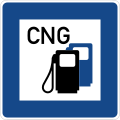
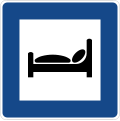

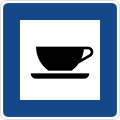
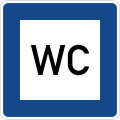



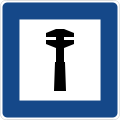

















































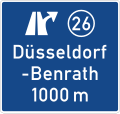

























































































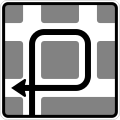

















![Directional indications by arrows, detour signs, three-quarter circle[22]](http://upload.wikimedia.org/wikipedia/commons/thumb/b/b8/Zusatzzeichen_1000-13_-_Richtungsangaben_durch_Pfeile%2C_Umleitungsbeschilderung_Dreiviertelkreis%2C_StVO_2017.svg/120px-Zusatzzeichen_1000-13_-_Richtungsangaben_durch_Pfeile%2C_Umleitungsbeschilderung_Dreiviertelkreis%2C_StVO_2017.svg.png)




![Directional indications by arrows, detour signs, semicircle[22]](http://upload.wikimedia.org/wikipedia/commons/thumb/e/e5/Zusatzzeichen_1000-34_-_Richtungsangaben_durch_Pfeile%2C_Umleitungsbeschilderung_Halbkreis%2C_StVO_2017.svg/120px-Zusatzzeichen_1000-34_-_Richtungsangaben_durch_Pfeile%2C_Umleitungsbeschilderung_Halbkreis%2C_StVO_2017.svg.png)










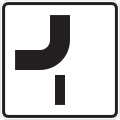


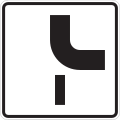




![2 km ahead[23]](http://upload.wikimedia.org/wikipedia/commons/thumb/2/2d/Zusatzzeichen_1004-31_-_in_..._km%2C_StVO_2017.svg/120px-Zusatzzeichen_1004-31_-_in_..._km%2C_StVO_2017.svg.png)



































